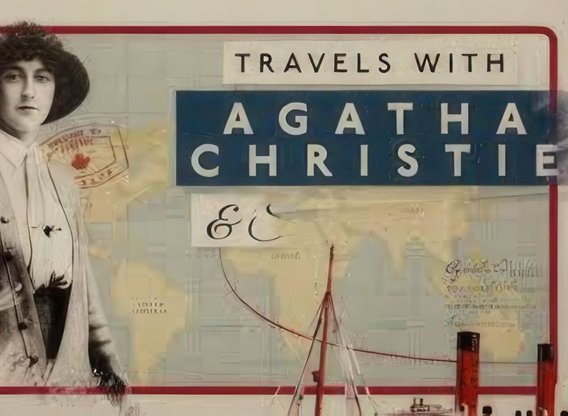M. Night Shyamalan's "The Village": A Study In Christie-esque Suspense

Table of Contents
The Isolated Setting: Mirroring Christie's Enclosed Worlds
Agatha Christie's novels often feature enclosed settings – a country manor, a train compartment, a remote island – that intensify the suspense and limit escape for her characters. The Village mirrors this perfectly. The isolated community, cut off from the outside world by its self-imposed fear, creates a claustrophobic atmosphere that heightens the tension. This isolation functions as a pressure cooker, amplifying the characters' anxieties and suspicions.
- Physical Isolation: The village's geographical location, surrounded by a supposedly menacing forest, physically restricts the inhabitants.
- Social Isolation: The villagers' self-imposed rules and fear create a socially isolated environment, fostering suspicion and distrust among themselves.
- Limited Communication: Their limited contact with the outside world further reinforces their confinement and intensifies the feeling of being trapped.
- Christie Parallels: This mirrors the confined settings of Christie novels like And Then There Were None, where ten strangers are trapped on a remote island, or Closed for the Season, set in a seemingly idyllic but ultimately sinister village.
Unreliable Narration and Red Herrings: A Christie Trademark
Christie was a master of unreliable narration and red herrings, using them to mislead the reader and maintain suspense. The Village employs these techniques expertly. The film initially presents a seemingly straightforward narrative, but as the story unfolds, we realize that the characters' perspectives are unreliable, their accounts of the "creatures" in the woods are clouded by fear and ingrained societal beliefs.
- Unreliable Characters: Ivy, Lucius Hunt, and even Noah are presented as potential sources of deception, each with their own hidden agendas and biases.
- Red Herrings: The constant threat of the creatures serves as a major red herring, distracting the audience from the true nature of the village's secrets.
- Christie Comparisons: This mirrors Christie's use of red herrings in novels like The Murder of Roger Ackroyd, where the narrator's unreliability is central to the plot's suspense, or And Then There Were None, where initial suspicions are constantly redirected.
The Unveiling of Secrets: A Gradual Revelation of Truth
Similar to Christie's gradual unveiling of the truth in her mysteries, The Village slowly reveals its secrets, building suspense with each revelation. The film doesn't immediately disclose the truth about the "creatures" or the history of the village, keeping the audience guessing. This measured pacing allows the tension to build organically, culminating in a shocking final twist – a classic Christie-esque revelation.
- Key Secrets: The film slowly unveils the truth about the village's origins, the nature of the "creatures," and the villagers' collective deception.
- Timing and Impact: Each revelation adds another layer of complexity, gradually chipping away at the audience's understanding, intensifying the suspense.
- Christie Structure: This echoes the structure of a typical Christie novel, where clues are gradually revealed, leading to a final, satisfying resolution, although often with a shocking twist.
Themes of Fear and Prejudice: Parallels in Christie's Works
The Village explores the pervasive themes of fear, prejudice, and societal control. These themes aren't merely plot devices; they are the very foundation upon which the village's isolated and fearful existence is built. This resonates with many of Christie's novels, often reflecting the social anxieties of their time.
- Fear and Prejudice in The Village: The villagers' fear of the "creatures" is inextricably linked to their deeply ingrained prejudices and societal control mechanisms.
- Christie's Themes: Christie's works often explore similar themes, such as class conflict and societal pressures, highlighting the impact of social structures on individual behavior, as seen in novels like Death on the Nile or Evil Under the Sun.
- Role in Suspense: These themes contribute significantly to the overall suspense and psychological impact of both The Village and Christie's novels. They provide a deeper layer of meaning beyond the simple mystery itself.
Conclusion: The Enduring Legacy of Suspense in "The Village"
M. Night Shyamalan's The Village, while undeniably unique, shares a remarkable kinship with the suspenseful narratives crafted by Agatha Christie. From its isolated setting to its masterful use of unreliable narration and red herrings, the film meticulously employs Christie-esque techniques to build tension, mislead the audience, and deliver a shocking twist. The exploration of fear, prejudice, and societal control adds layers of psychological depth, further enhancing the overall suspense and echoing similar thematic concerns present in Christie's body of work. Delve deeper into the world of suspense by revisiting M. Night Shyamalan's The Village and exploring the masterful techniques employed by Agatha Christie. Experience the chilling thrill of Christie-esque suspense for yourself!

Featured Posts
-
 The Gretzky Trump Connection Controversy And Its Effect On His Lasting Legacy
May 20, 2025
The Gretzky Trump Connection Controversy And Its Effect On His Lasting Legacy
May 20, 2025 -
 Is There A Murder In Towards Zero Episode 1 Unraveling The Plot
May 20, 2025
Is There A Murder In Towards Zero Episode 1 Unraveling The Plot
May 20, 2025 -
 Ivoire Tech Forum 2025 Un Evenement Cle Pour Le Numerique En Cote D Ivoire
May 20, 2025
Ivoire Tech Forum 2025 Un Evenement Cle Pour Le Numerique En Cote D Ivoire
May 20, 2025 -
 Travels With Agatha Christie And Sir David Suchet A Comprehensive Review
May 20, 2025
Travels With Agatha Christie And Sir David Suchet A Comprehensive Review
May 20, 2025 -
 Agatha Christie Back From The Dead On Bbc
May 20, 2025
Agatha Christie Back From The Dead On Bbc
May 20, 2025
